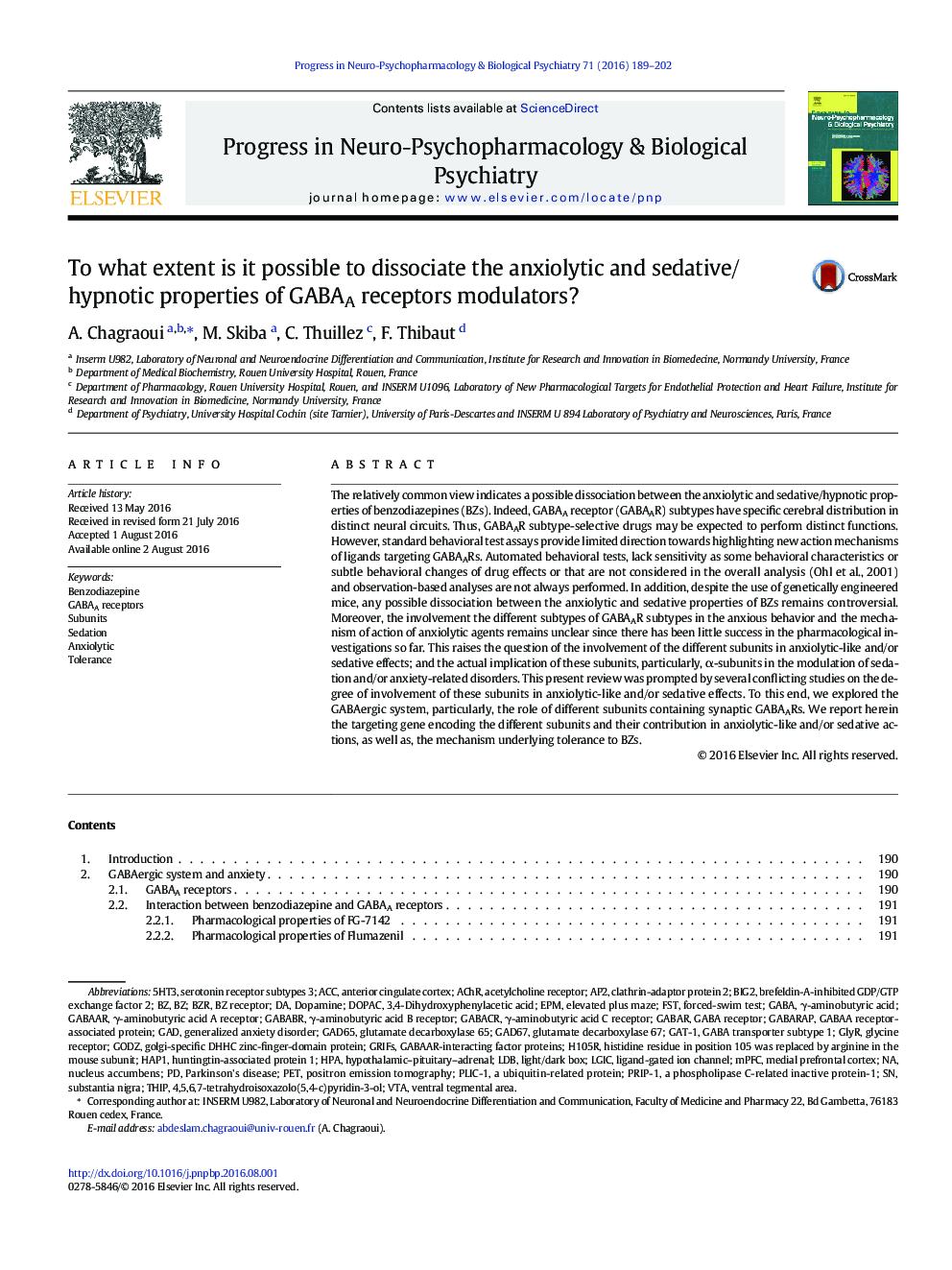| Article ID | Journal | Published Year | Pages | File Type |
|---|---|---|---|---|
| 2564650 | Progress in Neuro-Psychopharmacology and Biological Psychiatry | 2016 | 14 Pages |
•The sedative effects of benzodiazepines may involve concomitant activation of α1 and α5-containing GABAARs.•The anxiolytic-like effects may involve modulation of α2, α3 and, at least in part, α5-GABAARs.•Tolerance to the sedative effects may be related to α5-containing GABAARs.•The addictive properties may be related to α1-containing GABAARs.
The relatively common view indicates a possible dissociation between the anxiolytic and sedative/hypnotic properties of benzodiazepines (BZs). Indeed, GABAA receptor (GABAAR) subtypes have specific cerebral distribution in distinct neural circuits. Thus, GABAAR subtype-selective drugs may be expected to perform distinct functions. However, standard behavioral test assays provide limited direction towards highlighting new action mechanisms of ligands targeting GABAARs. Automated behavioral tests, lack sensitivity as some behavioral characteristics or subtle behavioral changes of drug effects or that are not considered in the overall analysis (Ohl et al., 2001) and observation-based analyses are not always performed. In addition, despite the use of genetically engineered mice, any possible dissociation between the anxiolytic and sedative properties of BZs remains controversial. Moreover, the involvement the different subtypes of GABAAR subtypes in the anxious behavior and the mechanism of action of anxiolytic agents remains unclear since there has been little success in the pharmacological investigations so far. This raises the question of the involvement of the different subunits in anxiolytic-like and/or sedative effects; and the actual implication of these subunits, particularly, α-subunits in the modulation of sedation and/or anxiety-related disorders. This present review was prompted by several conflicting studies on the degree of involvement of these subunits in anxiolytic-like and/or sedative effects. To this end, we explored the GABAergic system, particularly, the role of different subunits containing synaptic GABAARs. We report herein the targeting gene encoding the different subunits and their contribution in anxiolytic-like and/or sedative actions, as well as, the mechanism underlying tolerance to BZs.
